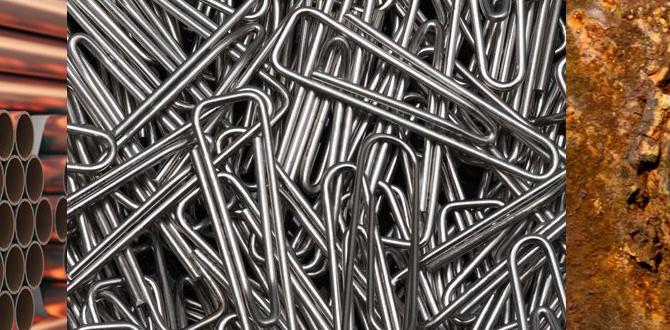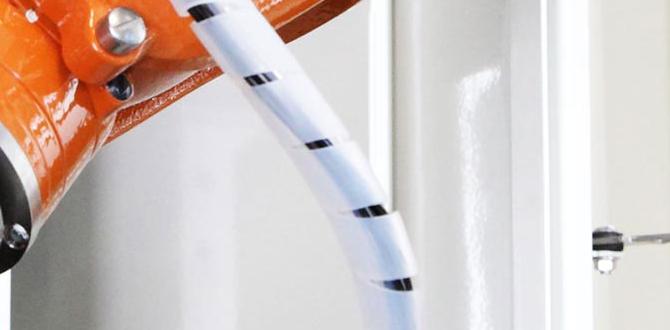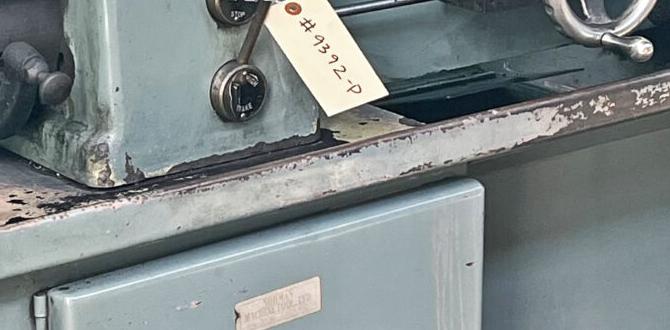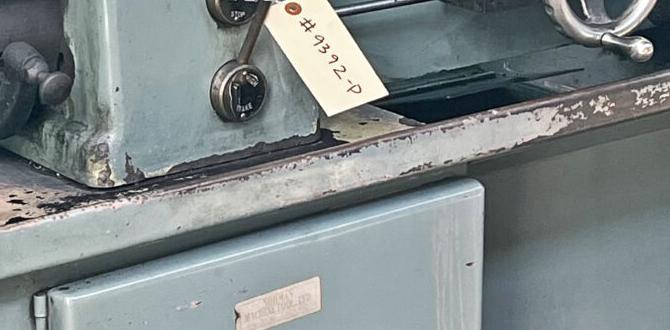Wood Lathe Dust Collection System Setup: A Comprehensive Guide
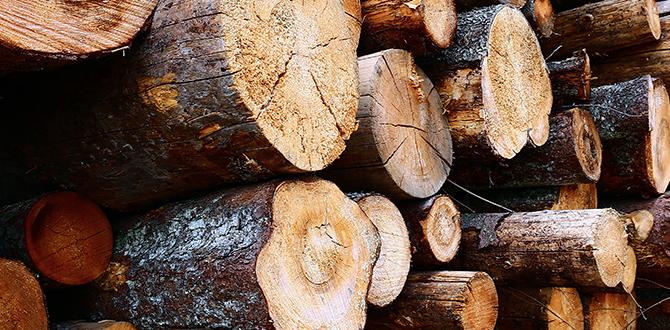
Wood Lathe Dust Collection System Setup
Setting up a **wood lathe dust collection system** is essential for a clean workspace. Dust and shavings can hide in corners and make you sick. First, choose a suitable location that is close to your lathe. Use a dust hood to trap debris. Connecting the system to your lathe helps gather dust effectively. Did you know that proper dust collection can improve the lifespan of your tools? A clean shop means safer and smarter woodturning!Components of a Wood Lathe Dust Collection System
Essential components: filter bags, ductwork, and vacuums. Optional accessories: blast gates, cyclone separators, and fans.A strong dust collection setup for your wood lathe needs some key parts. First, **filter bags** trap the fine dust, making your shop cleaner. **Ductwork** connects everything, like a highway for dust on its way to the vacuum. Speaking of vacuums, they’re your main defense against that pesky sawdust!
Now, there are a few optional extras that can make life even easier. **Blast gates** control airflow, helping you save energy and keep things tidy. **Cyclone separators** catch larger debris before it hits the vacuum, while **fans** can boost airflow like a superhero cape for your system.
| Component | Function |
|---|---|
| Filter Bags | Traps fine dust |
| Ductwork | Connects system components |
| Vacuum | Main dust collector |
| Blast Gates | Controls airflow |
| Cyclone Separators | Catches larger debris |
| Fans | Boosts airflow |
With these components, you can wave goodbye to dust clouds and enjoy a cleaner workspace. Isn’t it nice to think about all that dust getting sucked away instead of snoozing on your favorite chair?
Choosing the Right Dust Collector for Your Wood Lathe
Factors to consider: size, power, and efficiency. Comparison of portable vs. stationary dust collectors.Picking the right dust collector can feel like choosing your favorite pizza topping—so many options! First, look at size. You want one that fits your space. Next, think about power. A stronger collector is better, especially for heavy woodwork. Finally, consider efficiency. You want it to suck up dust like a vacuum on caffeine!
| Type | Size | Power | Efficiency |
|---|---|---|---|
| Portable | Compact | Low to Medium | Good for small projects |
| Stationary | Large | High | Great for heavy-duty use |
Remember, whether you choose portable or stationary, the right dust collector keeps your workspace clean (and your coughs away). Think about your projects, and you’ll make the best choice!
Planning Your Dust Collection System Setup
Assessing your workshop layout for optimal dust collection. Determining duct sizes and run lengths to ensure efficiency.Creating a dust collection system starts with planning your workshop layout. Think about where your wood lathe and other tools are. Place your dust collector close to them. This helps catch more dust. Next, measure duct sizes and run lengths. Larger ducts carry more dust efficiently, while shorter runs reduce blockage. Here are some tips:
- Keep ducts straight and short for better airflow.
- Use the right size ducts for your tools.
- Add bends carefully to avoid clogs.
With good planning, your dust collection will work like a charm!
How do I assess my workshop layout for dust collection?
Look at where your tools are placed. Position your dust collector nearby. This setup will help trap dust more effectively.
What are the proper duct sizes for my dust collection?
Use larger ducts for bigger machines and smaller ones for hand tools. This maximizes airflow and reduces dust build-up.
Installation Process for Dust Collection Systems
Stepbystep guide to installing ductwork and collectors. Tips for securing connections and preventing leaks.Setting up a dust collection system is important for a clean workspace. Follow these steps for a smooth installation:
- Plan your layout. Sketch where the ductwork and collectors will go.
- Gather all needed materials. Get ducting, connectors, and a dust collector.
- Cut the duct to size. Make sure it fits your space.
- Secure connections with screws and tape. This helps prevent leaks.
- Test your system. Turn it on and check for any gaps.
For added support, you can also use brackets to hold the duct in place. Take your time to make sure everything fits well, as this will help your system work better.
How can I prevent leaks in my dust collection system?
To keep your system tight, use strong tape and secure screws. Check each connection carefully. If you notice a leak, fix it right away. A well-sealed system is more effective and keeps your space cleaner!
Maintaining Your Wood Lathe Dust Collection System
Routine maintenance checks and cleaning protocols. Signs of inefficient dust collection and troubleshooting tips.Keeping your wood lathe dust collection system in shape is key to a clean workspace. Regular checks and cleaning help catch small problems before they grow. Look for signs of weak suction, blocked hoses, or excess dust. If you notice more dust than usual, it may signal inefficiency. Here are some quick maintenance tips:
- Clean the filters monthly.
- Check hose connections for leaks.
- Empty the dust bin regularly.
- Inspect for clogs in the system.
- Ensure the fan spins freely.
If your system isn’t working right, try unclogging hoses first. A small adjustment can make a big difference!
What are common signs of dust collection issues?
Weak suction, unusual noise, and excess dust around your lathe are common signs. Addressing these issues can help maintain optimal performance.
Enhancing the Effectiveness of Your Dust Collection System
Advanced techniques for improved air flow. Custom modifications to cater to specific woodworking needs.Improving your dust collection system can be easier than you think. Better airflow is key. Consider using larger ducts. This helps move air faster. Custom changes can also help your needs. Think about adding:
- Forced air systems to boost flow.
- Thinner hoses to reduce clogging.
- Filters designed for fine dust.
These tricks can make a huge difference in your workspace. They help keep the air clean so you can work better and safer.
What are advanced techniques for dust collection?
For better dust collection, try using larger ducts and extra filters. These can help with airflow. Adjusting sizes will make it more efficient for your projects.
What custom modifications can I make?
- Install blast gates to control airflow.
- Use a separator to catch larger debris.
- Make sure hoses fit tightly to prevent leaks.
Cost Considerations for Dust Collection Systems
Budgeting for components and installation. Costbenefit analysis of investing in an efficient system.Setting up a dust collection system can be tricky, especially for your budget. First, think about what you need. Components like ducts, filters, and vacuums add up. Budgeting wisely is key. You might save money in the short term with cheaper options, but an efficient system can save you time and hassle later. Want to see the wise choice? Check out the table below!
| Component | Estimated Cost |
|---|---|
| Ducting | $50 – $150 |
| Filter | $30 – $100 |
| Vacuum | $200 – $500 |
| Installation | $100 – $300 |
In the end, spending a little extra on quality can be worth it. Remember, you’re not just investing in equipment. You’re investing in your health and a cleaner workspace! Plus, who doesn’t want to show off a shiny new system? 💥
Conclusion
In conclusion, setting up a wood lathe dust collection system is essential for a clean workspace. Choose the right tools, use proper filters, and position your system wisely. This setup keeps your environment safe and healthy. Start by reviewing your current tools and consider improvements. For more tips, check out online resources or ask local experts!FAQs
Certainly! Here Are Five Questions Related To Setting Up A Wood Lathe Dust Collection System:Sure! Here are five questions you might ask about a wood lathe dust collection system: 1. What is a dust collection system? 2. Why do we need a dust collection system for a wood lathe? 3. How do we set up the dust collector? 4. What tools do we need for the setup? 5. How can we keep the dust collector working well?
Sure! Just ask your question, and I’ll be happy to help you with a short and clear answer.
What Are The Key Components Needed For An Effective Wood Lathe Dust Collection System?To have a good dust collection system for a wood lathe, you need a few important parts. First, get a strong dust collector to suck up the dust. Next, use a flexible hose to connect the lathe to the dust collector. Make sure the hose is the right size and not too long. Finally, you might want to add a filter to catch tiny dust particles.
How Do You Determine The Appropriate Size Of The Dust Collector For A Wood Lathe Setup?To find the right size of a dust collector for your wood lathe, you first need to know the size of your shop. Measure the area where you work. Then, check how much dust your lathe creates. A good rule is to have at least 1 cubic foot of airflow for every square foot of your workspace. This helps keep the air clean while you work.
What Are The Best Practices For Positioning The Dust Collection Hood To Maximize Efficiency In Capturing Dust And Chips?To position the dust collection hood for the best performance, you should place it close to the source of dust. Make sure it is at the right angle to catch dust and chips. Keep the hood high enough to avoid blocking your work but low enough to trap dust. Finally, check for any gaps where dust can escape. Remember, the closer and more direct the hood is, the better it works!
How Can I Minimize Noise Levels From The Dust Collection System While Still Maintaining Effective Suction?You can make your dust collection system quieter by adding noise-dampening materials, like foam or rubber mats, around it. You might also choose a quieter model or use a muffler to reduce sound. Another tip is to keep the system well-maintained; clean filters let it work better with less noise. Lastly, try to place the system farther away from where you work. These changes can help you keep the suction strong while lowering the noise.
What Maintenance Is Required To Ensure The Longevity And Effectiveness Of A Dust Collection System Used With A Wood Lathe?To keep your dust collection system working well, you should empty the dust bag often. Check the filters regularly and clean them to prevent clogs. Make sure all the hoses are connected tight and not damaged. You should also inspect the motor for any weird noises. This will help your dust collector last longer and work better!
{“@context”:”https://schema.org”,”@type”: “FAQPage”,”mainEntity”:[{“@type”: “Question”,”name”: “Certainly! Here Are Five Questions Related To Setting Up A Wood Lathe Dust Collection System:”,”acceptedAnswer”: {“@type”: “Answer”,”text”: “Sure! Here are five questions you might ask about a wood lathe dust collection system: 1. What is a dust collection system? 2. Why do we need a dust collection system for a wood lathe? 3. How do we set up the dust collector? 4. What tools do we need for the setup? 5. How can we keep the dust collector working well?”}},{“@type”: “Question”,”name”: “”,”acceptedAnswer”: {“@type”: “Answer”,”text”: “Sure! Just ask your question, and I’ll be happy to help you with a short and clear answer.”}},{“@type”: “Question”,”name”: “What Are The Key Components Needed For An Effective Wood Lathe Dust Collection System?”,”acceptedAnswer”: {“@type”: “Answer”,”text”: “To have a good dust collection system for a wood lathe, you need a few important parts. First, get a strong dust collector to suck up the dust. Next, use a flexible hose to connect the lathe to the dust collector. Make sure the hose is the right size and not too long. Finally, you might want to add a filter to catch tiny dust particles.”}},{“@type”: “Question”,”name”: “How Do You Determine The Appropriate Size Of The Dust Collector For A Wood Lathe Setup?”,”acceptedAnswer”: {“@type”: “Answer”,”text”: “To find the right size of a dust collector for your wood lathe, you first need to know the size of your shop. Measure the area where you work. Then, check how much dust your lathe creates. A good rule is to have at least 1 cubic foot of airflow for every square foot of your workspace. This helps keep the air clean while you work.”}},{“@type”: “Question”,”name”: “What Are The Best Practices For Positioning The Dust Collection Hood To Maximize Efficiency In Capturing Dust And Chips?”,”acceptedAnswer”: {“@type”: “Answer”,”text”: “To position the dust collection hood for the best performance, you should place it close to the source of dust. Make sure it is at the right angle to catch dust and chips. Keep the hood high enough to avoid blocking your work but low enough to trap dust. Finally, check for any gaps where dust can escape. Remember, the closer and more direct the hood is, the better it works!”}},{“@type”: “Question”,”name”: “How Can I Minimize Noise Levels From The Dust Collection System While Still Maintaining Effective Suction?”,”acceptedAnswer”: {“@type”: “Answer”,”text”: “You can make your dust collection system quieter by adding noise-dampening materials, like foam or rubber mats, around it. You might also choose a quieter model or use a muffler to reduce sound. Another tip is to keep the system well-maintained; clean filters let it work better with less noise. Lastly, try to place the system farther away from where you work. These changes can help you keep the suction strong while lowering the noise.”}},{“@type”: “Question”,”name”: “What Maintenance Is Required To Ensure The Longevity And Effectiveness Of A Dust Collection System Used With A Wood Lathe?”,”acceptedAnswer”: {“@type”: “Answer”,”text”: “To keep your dust collection system working well, you should empty the dust bag often. Check the filters regularly and clean them to prevent clogs. Make sure all the hoses are connected tight and not damaged. You should also inspect the motor for any weird noises. This will help your dust collector last longer and work better!”}}]}
